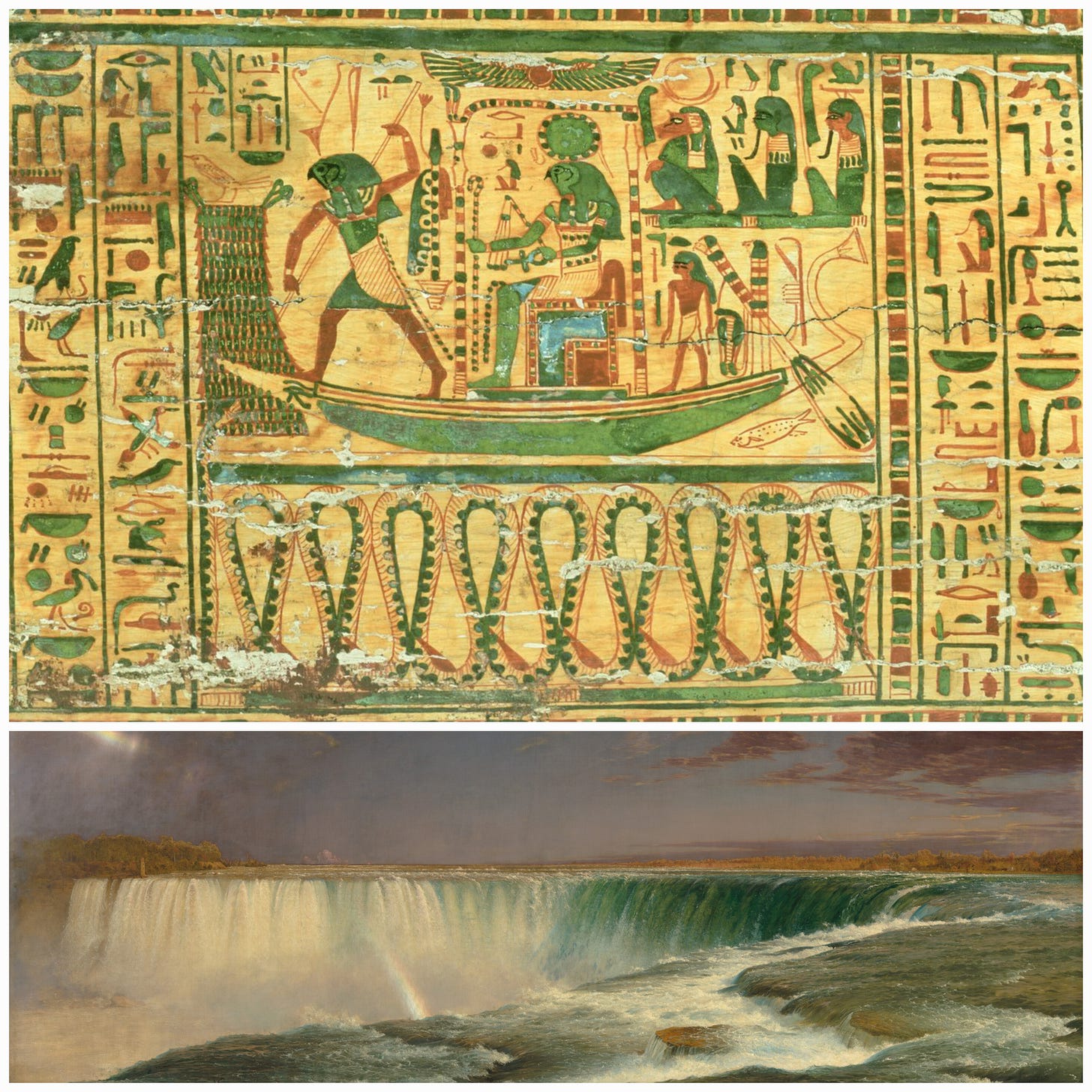The Journey of the Sun God Ra, 990-969 B.C. (top)
Niagara, 1857 by Frederic Edwin Church. (bottom)
The considered artworks offer insight into the respective cultural contexts of the artists through their effective communication of revered, spiritual subject matter. An unknown Egyptian working in the tenth century created The Journey of the Sun God Ra, depicting the solar deity sailing in the underworld above Apophis the serpent – whom Ra must defeat before rising to bring life-sustaining light again. Though lacking physical depth or proper proportion, the composition retains great profundity and aesthetic sophistication via a blend of material and spiritual imagery as well as figures sized to illustrate hierarchy. The focus is metaphysical; however, such language is somewhat misleading in that a strict material/spiritual dualism would not have featured in a worldview held by this ancient Egyptian. Painting on the interior of a coffin, the artist is intentional in rendering this scene of a god harrowing hell, as it were; the relationship between the piece and mythological/religious conceptions of life’s journey is evident.
Three millennia later, American artist Frederic Edwin Church paints a view of the natural world imbued with spiritual sentiments that reflect the time’s zeitgeist. With Niagara, Church endeavors to demonstrate the awe-inspiring expanse of the flowing form; a sense of scale and depth is achieved via an atmospheric perspective along with shifts in value as one follows the falls' curves. Influenced by Romanticism, the artist pursues a portrait of God in a landscape – he attempts to capture and display the beauty and grandeur of nature associated with the divine.
Wedding the immanent and transcendent, Church brings the viewer to a vantage point of appreciation for a (super)natural wonder; however, something might obfuscate the sight for a spectator today – manifest destiny. In light of the history of American expansion star-spangled lens could be seen as tinting and tainting the Romantic vision of Niagara; though, in the context of Church's time the birth and rearing of a nation by God in the cradle of creation is being celebrated.
For the tenth-century Egyptian and Frederic Edwin Church nature and the divine are in an inexorable relationship; the artworks addressed share few formal qualities, yet the theme of life's endurance remains constant between them. The Journey of the Sun God Ra and Niagara narrate the spiritual story that life shall persist – god(s) willing.





NON OMNIS MORIAR for sure!